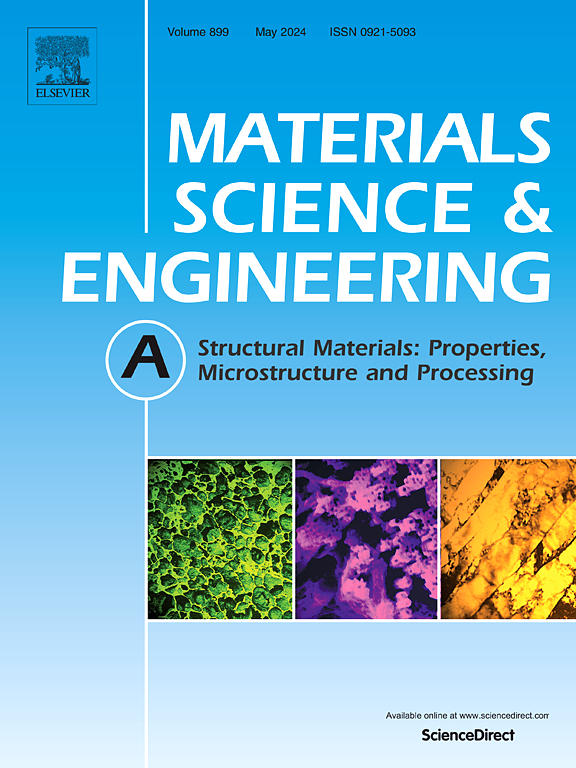Skeletal distribution of silicon phase for high plasticity in hypoeutectic Al-Si alloy
IF 6.1
2区 材料科学
Q1 MATERIALS SCIENCE, MULTIDISCIPLINARY
引用次数: 0
Abstract
Phase selective recrystallization (PSR) has been proposed as an effective method to achieve ultra-high ductility of in as-cast Al-Si alloys. However, the intrinsic reasons for the exceptional ductility are still unclear. Here, the unique skeletal distribution of eutectic silicon phases in PSR-treated Al-Si alloys was investigated to reveal the relationship between the microstructure and mechanical property. The skeletal distribution of silicon phase is composed of three distinct microstructural configurations, silicon phase inside the grain (SIG), silicon phase at the grain boundary (SAG), and no silicon phase inside or outside the grain (NSG). Compared with the as-cast and fully recrystallized samples, the tensile elongation of PSR sample increased ∼18 % and 8 %, respectively. During deformation, SIG initially bears more deformation strain, with void nucleation occurring predominantly in this region until its strain-carrying capacity reaches its upper limit. In the middle and late deformation stages, strain location shifts towards SAG and NSG regions bear more strains, trigger more significant voids nucleation. The reduced strain level in SIG causes early-formed voids to grow slowly, delays the void coalescence and crack propagation. This work provides valuable insights for developing high-performance Al-Si alloys with concurrent strength and ductility enhancement.
低共晶铝硅合金中高塑性硅相的骨架分布
相选择再结晶(PSR)是实现铸态铝硅合金超高塑性的有效方法。然而,这种特殊延展性的内在原因尚不清楚。本文研究了经psr处理的Al-Si合金中共晶硅相的独特骨架分布,揭示了其显微组织与力学性能之间的关系。晶内硅相(SIG)、晶界硅相(SAG)和晶内外无硅相(NSG)三种不同的微观组织形态构成了硅相的骨架分布。与铸态和完全再结晶样品相比,PSR样品的拉伸伸长率分别提高了~ 18%和8%。变形过程中,SIG初始承受更多的变形应变,空洞形核主要发生在该区域,直到其承载应变能力达到上限。在变形中后期,应变位置向SAG区和NSG区转移,承受更多的应变,引发更显著的空洞成核。SIG应变水平的降低使早期形成的孔洞生长缓慢,延迟了孔洞的合并和裂纹扩展。这项工作为开发同时增强强度和延展性的高性能铝硅合金提供了有价值的见解。
本文章由计算机程序翻译,如有差异,请以英文原文为准。
求助全文
约1分钟内获得全文
求助全文
来源期刊

Materials Science and Engineering: A
工程技术-材料科学:综合
CiteScore
11.50
自引率
15.60%
发文量
1811
审稿时长
31 days
期刊介绍:
Materials Science and Engineering A provides an international medium for the publication of theoretical and experimental studies related to the load-bearing capacity of materials as influenced by their basic properties, processing history, microstructure and operating environment. Appropriate submissions to Materials Science and Engineering A should include scientific and/or engineering factors which affect the microstructure - strength relationships of materials and report the changes to mechanical behavior.
 求助内容:
求助内容: 应助结果提醒方式:
应助结果提醒方式:


